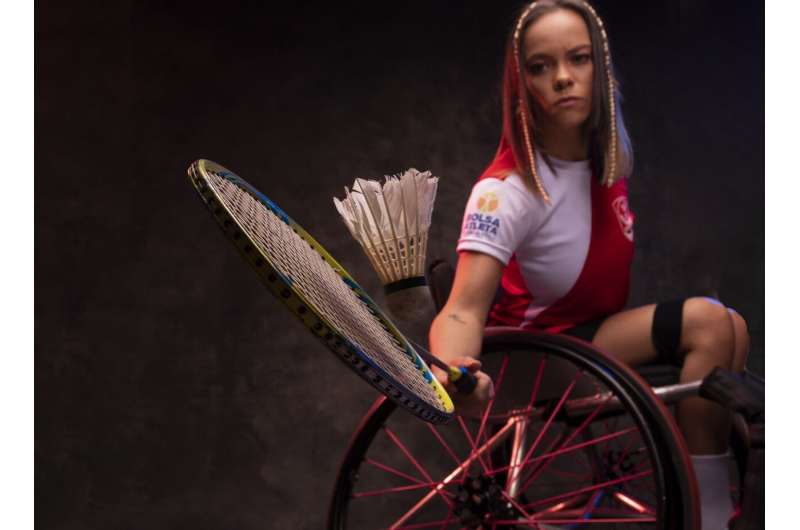This article has been reviewed according to Science X's editorial process and policies. Editors have highlighted the following attributes while ensuring the content's credibility:
fact-checked
trusted source
written by researcher(s)
proofread
The Paris Olympics celebrated the gender-equal games—the picture isn't so rosy for women Paralympians

Much has been written about the success of women athletes at the 2024 Paris games, dubbed the first gender-equal Olympics with equal numbers of men and women competing.
However, the situation for the Paralympic games is much less promising.
Just 42% of athlete spots at the Paralympics will go to women (equal to the Tokyo games).
At the non-elite level, the situation is even worse.
In Australia, just 19% of women with disability are regularly involved in organized sport, compared to 34% of non-disabled women, and 27% of men with disability.
With nine years to go until the 2032 Brisbane Paralympics, these participation numbers are a significant concern.
Barriers for women with disabilities
The Australian government has invested in Paralympics Australia to improve their talent identification and pathway programs.
The goal is to build towards "Australia's biggest ever team to achieve the nation's best ever performance" in Brisbane 2032, according to minister for sport Anika Wells.
However, to meet this goal, Australian sport needs to address the major issues with the pathways, development and elite programs that are currently failing women with disability.
There are numerous reasons for this.
Women with disability tend to have less support to engage with sport, as many parents and medical professionals are highly protective and tend to underestimate their physical capabilities.
Consequently, they are harder to identify using traditional talent search methods, particularly in sports that may be more physical or involve contact.
In my ongoing research looking at the experiences of elite women para-athletes, one athlete revealed: "It's been really hard to find more female athletes to take up the sport because it is quite a physical and difficult sport."
This is particularly true for women with high-support needs, who are even less likely to participate and are identified as a major gap in the Australian team.
The issue is at all levels of sport
The battle isn't over when athletes get into the elite pathway.
Women with disability are often coached by male, able-bodied coaches, who have minimal understanding of disability. This can have a significant impact.
There are also concerns that women with disability are more likely to receive inappropriate comments about their disability, gender or weight, or even sexual harassment from some male coaches.
Participants in my study also identified a lack of knowledge and limited research about disability sport.
One athlete said it's "hard for [coaches or administrators] to set up [coaching] courses, say how to coach a para-athlete, when there's not really much data."
This was a particularly issue for sportswomen who require specialized equipment like wheelchairs or prosthetics, who have to rely on trial and error in their design.
Even national training facilities are not always accessible, respondents to my study identified, let alone grassroots facilities.
Indeed, women with disabilities often face specific accessibility challenges that are not taken into account by male-dominated disability studies and design. For example, the design of accessible toilets to accommodate menstrual issues and catheterization (if the athlete is unable to completely empty their bladder).
Furthermore, while sport can be a place of inclusion and belonging, women with disability often experience bullying, anxiety, and exclusion, from coaches, administrators, and non-disabled parents and children.
As one respondent in my study said, "Most of us have been bullied somewhat or had rude or kind of mean comments."
In particular, some women with disabilities will avoid sports in which their body will be on display.
While the Paralympics may be a celebration of the diversity of bodies, at the lower levels, a more welcoming community must be developed to ensure a safe environment for women with disability.
Next steps
Key to creating a safe environment is the need to manage the mixed-gender training environments of many Paralympic sports.
While 8% of quota spots in Paris are ostensibly gender-neutral, in reality, sports like wheelchair rugby are significantly male-dominated (though Australia has a record three women competing in wheelchair rugby at the Paris Paralympics).
These sports are often not inclusive and haven't adapted to ensure the safety of women.
Furthermore, though sports like wheelchair basketball are segregated at the Paralympic level, junior programs have boys and girls competing together. This is often to the detriment of the development of girls.
Training is often targeted to men, which one athlete suggested is a barrier: "I'm doing pretty much the same program as the para-men […] it's quite hard to train together."
Despite these significant issues facing women with disability in sport, most sport organizations do not have specific plans as to how to address this gender gap.
Instead, funding is often tied to one area of disadvantage (such as gender, disability, culture), without an understanding that people can have several disadvantages that need to be specifically addressed.
For Australia to have its most successful Paralympic games ever, we need to start thinking now about how we can change sporting cultures to better include women with disability.
Provided by The Conversation
This article is republished from The Conversation under a Creative Commons license. Read the original article.![]()




















